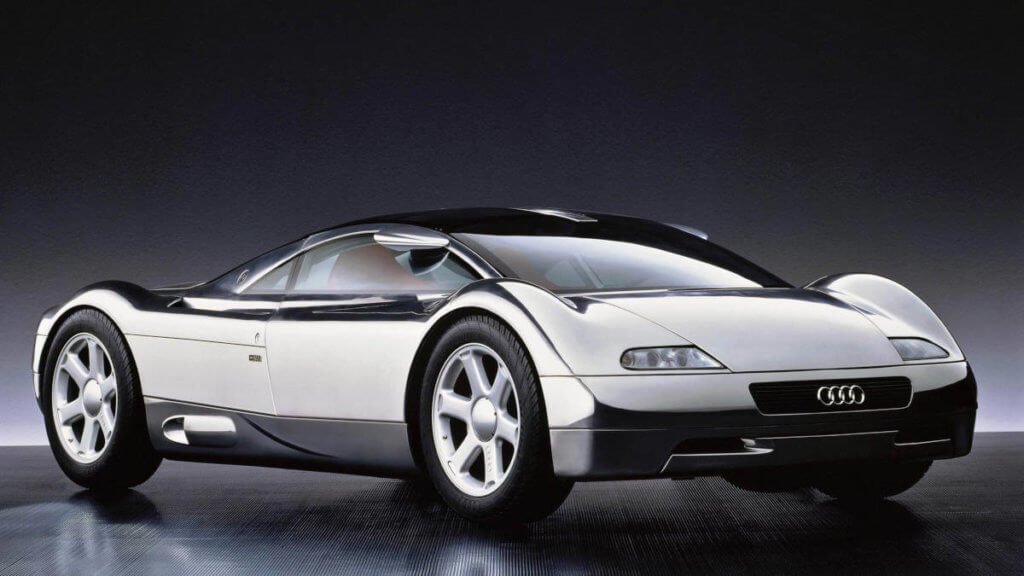A forgotten concept – Audi Avus Quattro
With the Avus quattro, Audi presented a desirable mid-engined sports car with a W12 engine at the Tokyo Motor Show in 1991. Despite much interest, it never went into series production. Instead, this concept study served as a preview of various developments that Audi brought into production shortly afterwards. For example, the car featured a highly polished aluminium body, which reappeared in a similar way at the world premiere of the A8 saloon in 1994. This was a nod to the legendary Auto Union Silver Arrows of the pre-war era. The design was also somewhat reminiscent of these racing cars. However, Audi did not yet use a spaceframe for the Avus, as it did later for the A8, but a skeleton made of steel tubes to hold the body parts. Nevertheless, a kerb weight of 1,250 kilograms was promised. The 20-inch wheels alone were almost half the height of the entire car.
509 hp from a displacement of 6 litres results in a top speed of 340 km/h. Country road speed is reached in three seconds – at least in theory.

Behind the cockpit with two bucket seats in red leather was the first W12 engine in the history of the VW Group. This was to produce 374 kW/509 hp from a displacement of six litres. The power transmission to the permanent quattro all-wheel drive was to be a manual six-speed gearbox. The acceleration time from standstill to 100 km/h was specified at around three seconds, with a top speed of 340 km/h.







However, the vast majority of experts assume that there was no running W12 at the time of its premiere in 1991. At least the engine block in the Avus quattro is only made of wood and plastic. The designers took the name of the sports car study from the Berlin race track AVUS (Automobil-Verkehrs- und Übungs-Straße). In Tokyo, the car put all other exhibits in the shade. Today it causes astonishment when it is shown in Audi’s Museum Mobile in Ingolstadt. Together with the quattro Spyder, the Avus quattro is a forerunner of the Audi R8.
Photos: Audi





